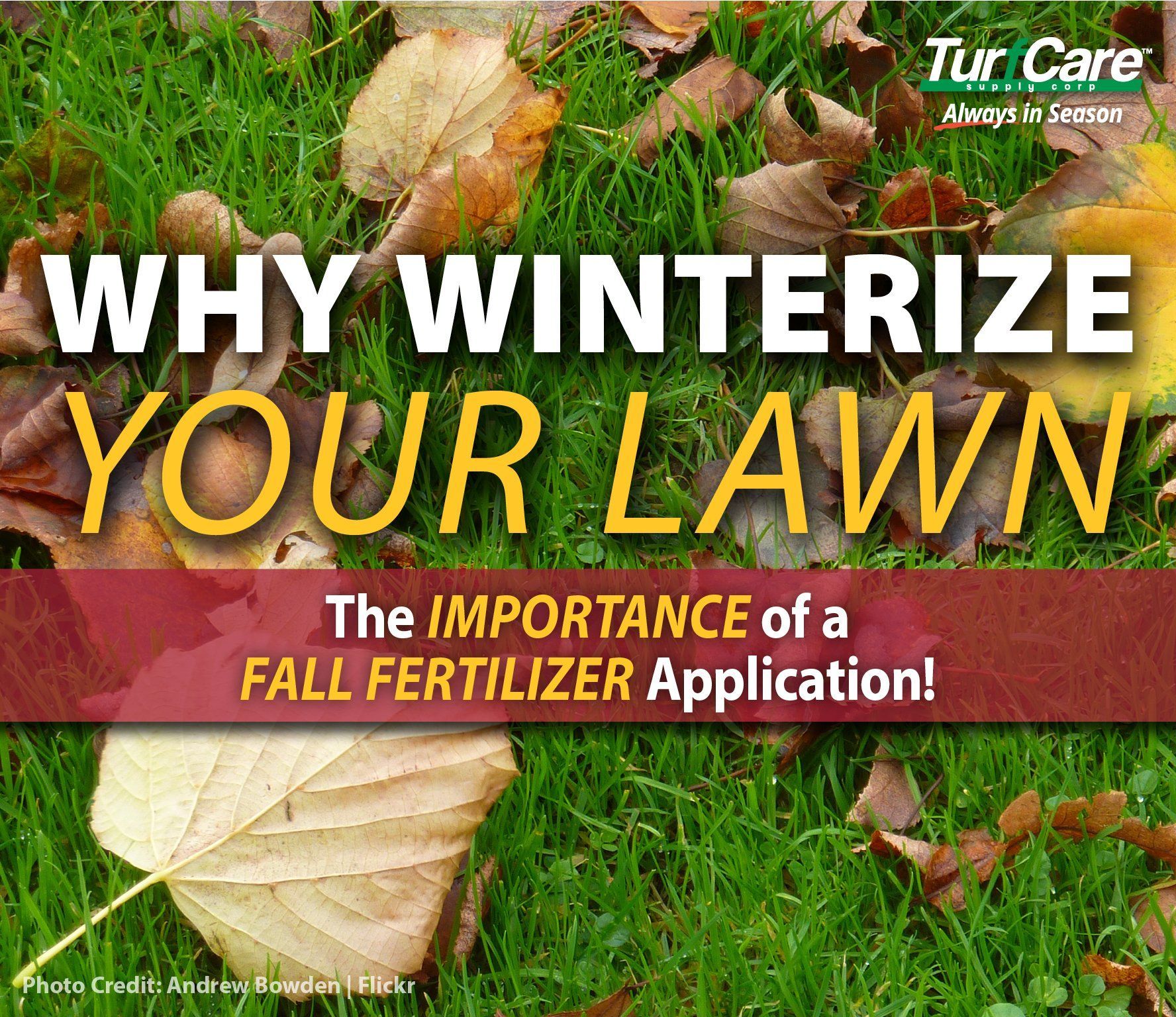Why Winterize Your Lawn

THE IMPORTANCE OF A FALL FERTILIZER APPLICATION
Remember all the time you spent on your lawn this spring and summer; weeding , feeding, treating, watering and mowing ? Now that fall is here don’t let all that hard work go to waste. There is one more step to ensure that your lawn is protected throughout the winter and has the nutrients it needs to start off next spring looking great! Although you may be feeling tired of lawn work, as the professional will tell you, fall is one of the most important fertilizer application times of the year.
WHY SHOULD I "WINTERIZE" MY LAWN?
Fall brings back perfect conditions for your lawn; cooler nights, morning dew, sufficient rainfall. These conditions cause your grass to begin to grow again. Your grass begins to store its nutrients in its roots throughout fall in preparation for winter. A fall feeding enables the plant to store more food for winter and is readily available when warmer temperatures arrive in spring, thus producing a quick spring-greening and thicker lawn growth.
HOW TO "WINTERIZE" YOUR LAWN
1. CONDUCT A SOIL TEST
If you’re unsure if you should apply a fall fertilizer, conduct a soil test to check the amount of potassium (an element essential to fall turf health) in your soil.
- NOTE: Cool-Season grasses will always benefit from a fall feeding since it is their peak growing season.
2. KNOW WHAT TYPE OF GRASS YOU HAVE AND WHEN TO APPLY A FALL FERTILIZER
Cool-Season Turf
Grass types such as Kentucky bluegrass, fescue or perennial ryegrass which are most commonly found in northern regions. Cool-season grasses experience their peak growth in fall and respond well to fertilizer. Fall fertilizer applications are best utilized by your lawn and soil when applied throughout Mid-September to Early November.
Warm-Season Turf
Grass types such as Bermuda, centipede, St. Augustine and Zoysia. If you’re located in an area where freezes occur and lawns go dormant during the winter, you shouldn’t fertilize after September 1st (so you don’t fuel new growth that will be damaged by winter freeze). If you’re located in an area where warm-season grass stays green during the winter months, an application of fall fertilizer in the early autumn is recommended.
- NOTE: If you are unsure of the type of grass you have, consult a lawn care expert to determine which species is in your yard.
3. PURCHASING THE CORRECT TYPE OF FERTILIZER: FALL FERTILIZER OR FERTILIZER WITH WEED & FEED?
When your lawn begins to grow again in fall, along with new grass growth, a few weeds may appear as well. If this happens, use a Fall Fertilizer with Weed and Feed (See Weeds to Tackle Late Summer and Fall article for more information about pesky weeds common in late summer and fall). If your lawn is weed-free, use a fertilizer meant for fall application. When choosing a lawn care product to winterizer your lawn, make sure that it has extra potash (chemical symbol K means potassium, it’s the “K” in N-P-K) in the blend. Potash/Potassium assists with root development that will strengthen your lawn so that it is prepared to survive the winter season and look great in spring.
4. APPLYING
First, you will need to clear the lawn of all leaves, either by leaf-mulching or by raking and bagging. Then use a lawn spreader to apply your fall fertilizer application. Refer to label instructions to determine timing, amount and application rate of the product you purchased.
For professional fertilizers, humic and AMP-XC™ enriched products available, please visit TurfCare’s online Product Catalog.
For green industry professionals or others interested in ordering Turfcare products, please contact our Customer Service to find a distributor near you.
The TURFReport Highlights:
Additional Articles and Insights
















